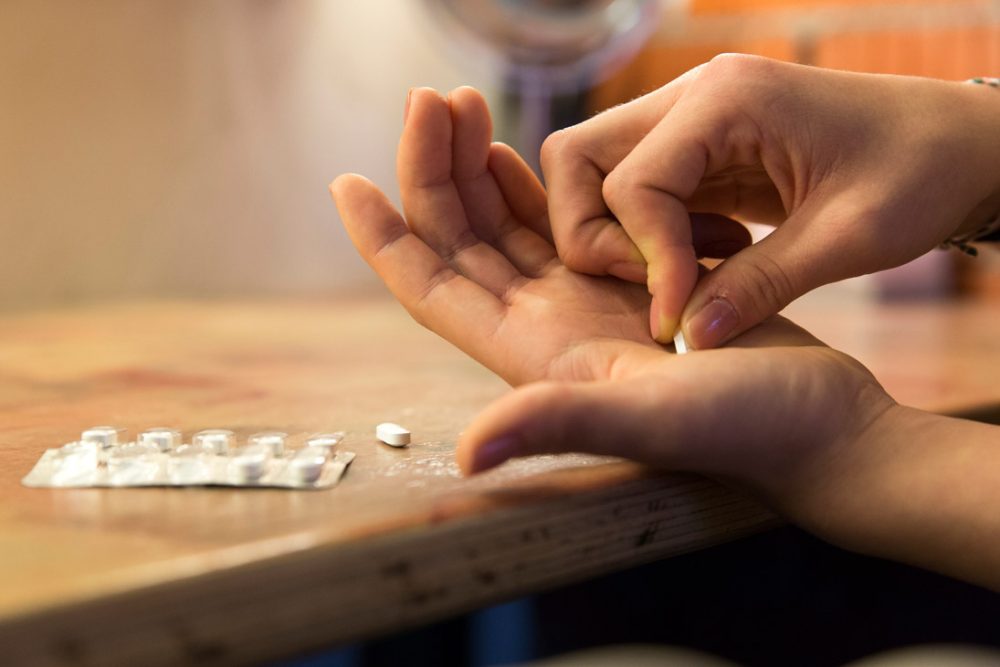Advertisment
In some US schools, 1 in 4 students report misusing prescription stimulants

U.S. middle and high schools with the most students taking prescription stimulants to treat ADHD also had, overall, the highest percentage of students who misused prescription stimulants within the past year.
The University of Michigan-led study highlights a significant association between ADHD stimulant therapy in schools and prescription stimulant misuse, said Sean Esteban McCabe, U-M professor of nursing and principal investigator on the study.
At some schools, 25% or more of kids reported misusing prescription stimulants in the past year—meaning they used the medication without a doctor’s orders or nonmedically, e.g., for recreation or to stay awake.
Key takeaway: Wide variation in stimulant misuse among schools
This is the first large study to examine the prevalence of prescription stimulant misuse and correlating factors in U.S middle and high schools, McCabe said. Stimulant misuse among schools ranged from 0% to 25%, with some outliers that were higher. Other findings include:
- Students in schools with the highest rates of stimulant therapy for ADHD had a 36% higher risk of misusing prescription stimulants
- In schools with 12% or more students treated with prescription stimulants for ADHD, 8% of students reported misusing prescription stimulants
- In schools with 6% or fewer students taking prescription stimulants for ADHD, 0-4% reported misusing prescription stimulants.
- Other characteristics of schools with higher misuse: higher proportion of highly educated parents; located in non-Northeastern regions and suburbs; more white students; medium levels of binge drinking; and schools surveyed from 2015-2020
“I can tell you that a student’s experience will be different at a school with no peers who misuse stimulants versus a school where 1 in 4 peers misuse stimulants,” said McCabe, director of the U-M Center for the Study of Drugs, Alcohol, Smoking and Health.
McCabe said the wide variation in misuse means individual schools should assess their own students for substance misuse behaviors rather than rely on existing data collected elsewhere.
Stimulant therapy is highly effective; risk for misuse can be reduced
Stimulant therapy for ADHD has increased in the last two decades. Prescription stimulants are one of the most widely shared prescription drugs among teens, and the most misused prescription drug among teens.
“Prescription stimulant therapy for ADHD does help millions of people, including in my own family, and students, friends and colleagues,” McCabe said. “It’s critical to balance the need for access to these medications while reducing the risk for misuse. This is more important than ever with the increases in prescribing.”
Medication-sharing among teens is a big reason kids who aren’t on stimulant therapy have access to prescription stimulants, but it’s not the only factor, McCabe said. Some schools in the study with little or no stimulant therapy still had misuse. Parents can take steps to prevent medication sharing:
- In middle school, start talking to kids about managing their medications
- Role play so kids know how to respond if asked to share medications
- Always store controlled substances in a lockbox and monitor pill counts
- Make sure schools have safe storage and dispensing policies, and ask about prevalence of misuse
- Contact prescriber immediately if you detect misuse
Other recent U-M studies show associations between stimulant therapy and misuse
One paper found that students who had used both stimulant and nonstimulant medications for ADHD were more likely to misuse prescription stimulants, or to use cocaine or methamphetamine, in the past year, compared to students who reported never using stimulant or non-stimulant therapy.
Another paper found that kids diagnosed early with ADHD, who started stimulant therapy early and were treated longer, had lower odds of later stimulant misuse compared to those who started therapy later and for a shorter duration.
These two studies and the current study used data collected between 2005 and 2020 by Monitoring the Future, a large survey of trends in legal and illicit drug use among American students in 8th, 10th and 12th grades. Not all studies used the same data sets.
The findings, appearing in JAMA Network Open, were supported by the National Institute on Drug Abuse at the National Institutes of Health and the U.S. Food and Drug Administration.
Study (available when embargo lifts): Prescription stimulant medical and nonmedical use among US secondary school students (DOI: 10.1001/jamanetworkopen.20238707)





